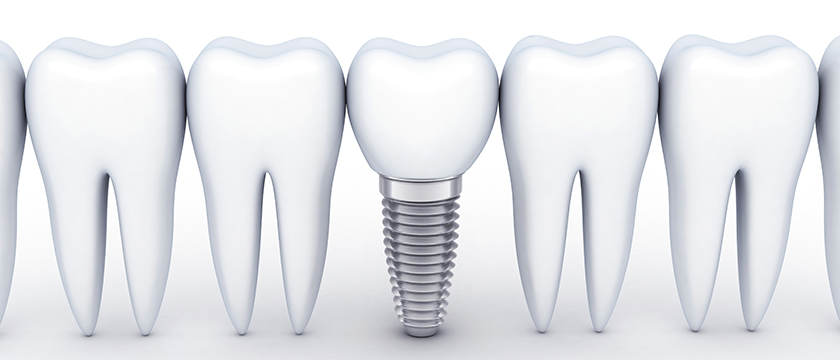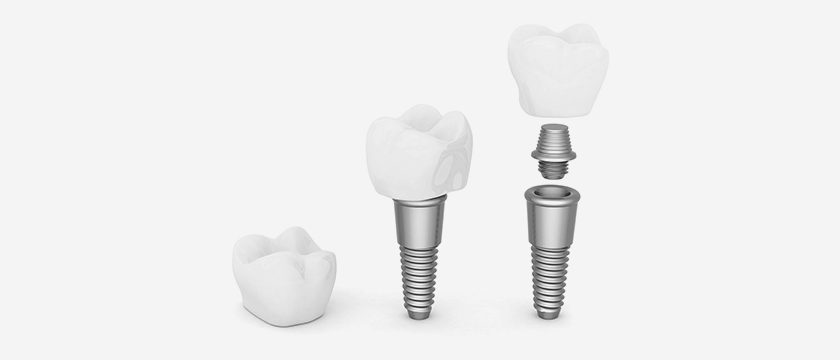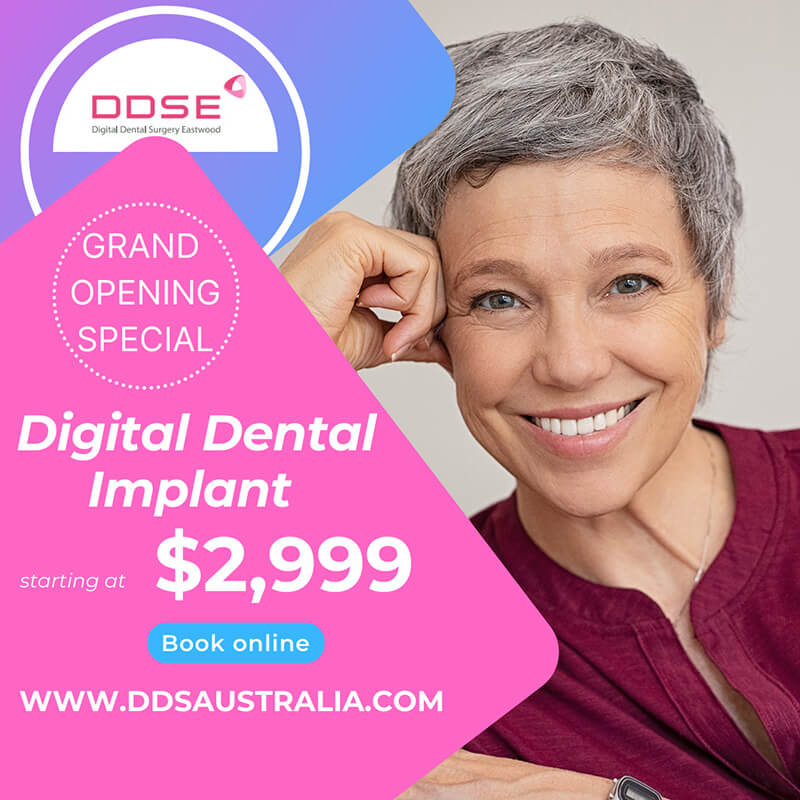Tooth loss is prevalent
Even though most of us can access good dental care, 10.2% of the country’s population had fewer than 21 teeth, and an alarming 1 in 15 adults (above the age of 15) had complete (edentulous) tooth loss in 2020. According to the National Institute of Dental and Craniofacial Research, periodontal disease is the leading cause of tooth loss. For many years the only option for replacing missing teeth was a conventional dental bridge or dentures, but nowadays, the go-to choice is dental implants.
What is a dental implant?
A dental implant is an artificial tooth root that supports a replacement tooth or dental crown. Patients may choose to restore their smile with implants if they have lost one or more teeth and would like a permanent solution to tooth loss. Implants integrate with the jawbone to provide a solid foundation for the restoration.
Dental implants are not to be confused with porcelain crowns that top the implant to mimic the look of a natural tooth. Crowns replicate the colour, size, shape and strength of the missing tooth so you can feel confident with your new smile. Depending on a patient’s circumstances, a dentist may recommend variations on the implant, such as an implant-retained bridge or denture. Once the crown has been placed over the implant, it can’t be seen.
How do dental implants work?
A dental implant works just like a natural tooth because the jawbone supports it in the same way. It comprises a titanium root, an abutment and a cosmetic porcelain crown.

Because implants are placed into the jawbone, you may not qualify right away for implants if you have experienced bone loss due to periodontal disease or bone reabsorption. However, your dentist will talk to you about the possibility of a bone graft so you can undergo the dental implant process at a later date.
What’s involved in the dental implant process?
Step 1 – Initial consultation
The first step of the dental implant process is attending an initial consultation with your implant dentist. They will carry out a comprehensive dental examination and take some x-rays to determine if you are suitable for dental implants. Once it’s decided you are a suitable candidate for implants, our dentists will schedule a date for surgery.
Step 2 – Digital dental implant surgery
Digital implant surgery utilises a 3D computer simulation to ascertain the condition of the bone and the position of the nerves. Armed with this information, the dentist can plan surgery with a minimal incision.
As digital implant surgery focuses on making the smallest incision possible without cutting the gum.
A computer guide is positioned over the teeth during the surgery to avoid damaging surrounding teeth or nerves. The guide also enables dentists to make precise yet small incisions for dental implant placement.
Digital dental implant surgery comes with numerous benefits, including:
Shorter surgery time
One of the main benefits of digital dental implants is the procedure doesn’t take as long. While surgery for a traditional dental implant can take up to an hour, with digital dental implant surgery, all the details are worked out beforehand in a mock surgery scenario, so it can take as little as 15 to 20 minutes to place one implant.
More comfortable procedure
Patients often worry that dental implant surgery will hurt, but patients should feel no discomfort during the process, thanks to modern anaesthesia. Moreover, with digital dental implant surgery, any discomfort is reduced further since there is no need for a large incision and sutures. The mock surgery stage also enables dentists to optimise the procedure, causing minimal disruption to the gums and jaw.
Faster recovery
Patients recover faster following minimal incision surgery since there is significantly less bleeding and swelling. However, with traditional implant surgery, the dentist has to cut down on the bone to check its condition and the placement of the nerves.
Fewer dental visits
Patients have to visit their dentist at almost every stage with traditional dental implants, which can mean as many as seven visits. With digital dental implants, dentists can plan surgery by working off a digital model without a patient being there. As a result, three dental visits are usually all that’s required for a patient to get a digital dental implant. These figures don’t include follow-up appointments.
Faster replacement teeth
With the digital dental implant process, there is a higher chance of patients receiving a temporary restoration the same day. This means they can leave the dental clinic with a smile that looks whole.
Step 3
The permanent dental crown will be placed once the bone has fully healed and the implant has stabilised, typically three to six months after the implant placement.
Benefits of digital dental implants
Digital dental implants offer all the benefits of traditional dental implants, namely:
- Natural tooth function
- Natural tooth appearance
- Stimulates the jaw to prevent bone loss and shrinkage
- No special care is necessary
- 90-95% success rate over ten years
Are you ready for digital dental implants?
Now you know what’s involved in the digital dental implant process and the benefits, why not schedule a free dental implant consultation with the friendly, experienced team at DDSS/DDII.
Sydney: (02) 8294 5812
Gosford: (02) 8294 8656
Note: Any surgical or invasive procedure carries risks. Before proceeding, you should seek a second opinion from an appropriately qualified health practitioner.
References
Electric Teeth – Denta Statistics Australia (and worldwide)
https://www.electricteeth.com/au/dental-statistics/
National Institute of Dental and Craniofacial Research – Periodontal Disease
https://www.nidcr.nih.gov/research/data-statistics/periodontal-disease
Healthline – What You Need To Know About A Dental Bone Graft
https://www.healthline.com/health/dental-bone-graft#:~:text=A%20dental%20bone%20graft%20is,synthetic%20bone%20material%20is%20used.
Healthline – Are Dental Implants Permanent?
https://www.healthline.com/health/dental-and-oral-health/how-long-do-dental-implants-last






